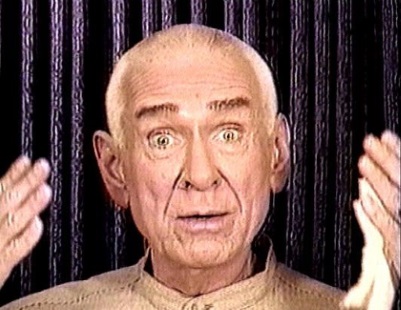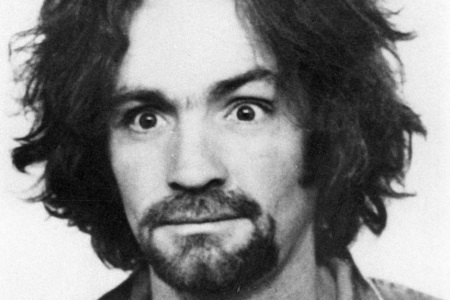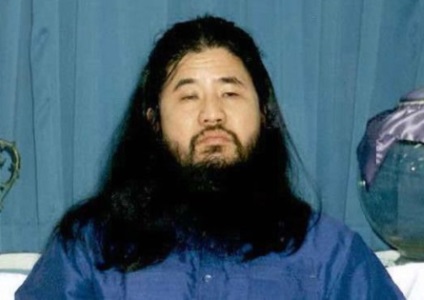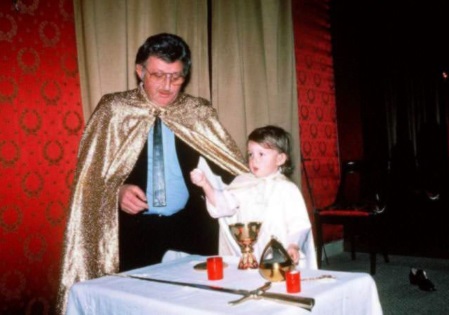
What are Cults?
While there are numerous interpretations of what a cult specifically entails, there is consensus on the fact that a modern cult (we will not be talking about ancient cults, which is a subject onto itself), exploits the beliefs of its members for the gain of the cult. Furthermore, the International Cultic Studies Association stresses the fact that cults are held together by “charismatic relations and demanding total commitment.” A cult then, does not need to be religious in nature as is often assumed. Political causes, marketing schemes and pseudo-therapy are frequently used for cultic purposes as well. What defines an organization as a cult is that they ensnare and exploit their followers.
The danger of a cult can be found in its ability to force members to sacrifice time, energy, money and mental health for the benefit of the cult at the cost of everything else, without providing valuable pay-off for that investment. The cult impairs an individual’s ability to make reasonable decisions, which can lead to them breaking away from family, friends or engaging in criminal activity.
Some common types of cults are listed below:
- Religious cults prey on people’s desire for spiritual guidance and while they provide religious services, they differ from religions by placing the desires of the cult above the needs of the cult members. The religious element is a way to abuse followers, not the goal in itself.
- Self-improvement cults have been on the rise in recent decades, and prey on people’s imperfections. Whereas a real self-help group will encourage people to improve their lives and become healthy, autonomous individuals, a self-help cult promotes dependence and strives to extract long-term benefits from a follower.
- Gangs often overlap with cultic behavior, and prey on an individual’s desire for identity, belonging and safety. For more information on them, you can read my previous article: Organized Crime for Writers
- Family and groups of friends have the potential to develop into a cult under the domineering hand of abusive parents or supposed friends.
- Work environment. Many unrecognized cults emerge in work environments, and are (consciously or not) created by employers as a means to increase productivity and loyalty to the organization to an unnatural degree.
How People Join Cults
The standard gateway into a cult is through an emotional bond such as a friend or family member. Cults make a concentrated effort to befriend emotionally vulnerable people to slowly indoctrinate them into the cult, which is a process that can take months to years. Most people are not irrational and will not walk into Jonestown out of personal volition. Most people will, however, be willing to go with a friend to a local seminar or gathering. Alternatively, certain cults are also known to use a practice called “flirty fishing” to attract new members. In this practice, the cult members will have sex with vulnerable people if they attend one of the cult gatherings.

The seminar or gathering will usually show little evidence of being part of a cult, masquerading behind the guise of a religion, political organization or some other front. Inspirational talks, emotional opening-ups, passionate pleas and similar techniques are used to warm attendants to the idea of the cult, without giving away the malicious intent behind it. In this climate, it is likely that the attendant themselves will also open up about their own beliefs and vulnerabilities, which strengthens the bond between the person and other attendants, and make them more agreeable to future events.
From there on the potential member will spend more and more time with members of the cult. The initial gateway into the cult (a friend, partner, family) will introduce the potential member to other cult members. From there on a process called “love-bombing,” which entails awarding the potential member with seemingly ceaseless amounts of unconditional love and understanding, makes it so that the individual will become emotionally dependent on the cult over time.
They will also be introduced to the compensators of the cult by this stage, further tying the individual to the cult. Compensators can be interpreted as promised rewards, such as “avoiding eternal damnation” as well as something smaller rewards like “gaining specialized knowledge”. Compensators are used by cults to give the illusion of a reward to members, without having to spend resources on providing the reward. For long-term compensators, only death can disprove them, and for short-term compensators, the cult will already have demanded their pay before the individual realizes they have been duped.

Becoming a part of a cult is rarely something that happens fast, but rather occurs gradually by increasing amounts of exposure to the cult. After having spent a lot of time with members of the cult, it becomes increasingly normalized to potential members. They become more suggestible to the beliefs of the cult, and more and more of the stranger elements of it are revealed to the individual. By that point the individual will likely have strong emotional ties to members and is unlikely to revolt against ideas they might not otherwise agree with.
How Cults Form
Cults are not usually built with the intention harming individuals (although they can be). To understand cults, you have to understand that there are various reasons behind their emergence, that more often than not overlap. One cult leader may create their cult with conscious effort, to fulfill a desire that they themselves have. Other cults may emerge through a gradual process of alienation. There is no single cause of cults, but there are common patterns. The most important and most general processes we will now discuss.
Entrepreneurial Enterprise
The Simplest route to cult-creation is typified in the entrepreneur model of cult formation. According to this model, cults are created by cult leaders on purpose, with the aim of attaining anything they may desire (power, money, amusement, sex). This model functions like an unscrupulous business, with the leader and the register selling compensators. Because the aim of these cults is to garner as much benefit for the leader, while minimizing the hassle of maintaining a cult, entrepreneur cults will usually be small in scale and vision. Like any other business, cost and benefit shapes the entrepreneurial cult.
- This type of cult can be expected to change its ‘merchandise’ regularly, as there are only so many times you can sell the same product to a customer. A televangelist cult for example, will see diminishing profits whenever their audience becomes placated. Instead, they will need to maintain suspense and keep their audience anxious for as long as possible.
- To start a cult according to the entrepreneur model, the leader must realize the potential benefit of creating a cult and how to goa about it. Oftentimes these leaders will have learned of this potential for profit, by having been a part of a cult themselves.
- Entrepreneurial cults can be gateways towards more advanced organizations. If the cult leader gets caught up in their own delusions it can transition into a full-fledged cult movement.
Psychological Issues
Not all cult leaders start their cults with malicious intent. Instead, they genuinely believe what they preach and wish to bring about something that they deem beneficial. Psychological issues and personal crises can lead an individual to experience a “vision” or “revelation” that forms the nucleus of their own belief system. Because people are likely to ridicule this person, they will become drawn inwards, allowing further delusions to pile up on their initial delusion leading to the creation of an idiosyncratic belief-system, with a whole slew of self-made compensators to accompany it.

So far we are talking about a delusional individual, but not a cult. The true problem starts if the individual happens to possess a sufficient amount of charisma to draw in people with compatible mental profiles (People desiring some form of meaning they can’t find in the mainstream world). If this happens, the peculiarities of an individual can transition into forming the basis of a cult.
- Oftentimes the creator of the cult will find a strong sense of satisfaction and mental clarity through the appraisal of their followers. This serves as confirmation of the cult’s success to them and the members, and thus further strengthens the cult.
Crisis
Cults come about in larger numbers in times of crisis, when the belief systems of individuals are tested, and they are more likely to reject the interpretations of reality as they know it. Military conflict, political instability or economic crisis place stress on individuals within a country, and makes them dismissive of the state of the world. Anything that rejects the conventional interpretation of the world (Cults among others) will gain a level of communal sympathy that they would not have in times of peace and prosperity.
Furthermore, disorder in the world can lead people to desire a clearly definable authority figure to turn to, instead of the chaos within their world. The cult leader serves as an anchorage for the individual. This formation process should be paired with another, as it does not in itself lead to the creation of a cult, but instead serves to bolster it.
Group Isolation
Groups form around individuals’ desire to obtain certain rewards that cannot be obtained through individual action. In the process, members may grow close and create strong emotional ties. This provides a potential problem if the goal that is strived towards turns out to be unattainable by the group, but the group is not willing to relinquish their quest to attain it. In such a scenario, the efforts of the group do not and will not lead to desired results, and thus the group is never awarded with the reward of their labor. To keep the group motivated, compensators may be created by the group, and the group’s belief in this compensator validates the creation of it (mutual conversion). The more time passes, the more the group is criticized by the outside world for their fruitless pursuit and the more secluded the group becomes.

In seclusion, any belief held by any individual in it carries more weight than it did before. As a result the group’s cultural development will adopt the beliefs of its members and slowly transition into a fully-fledged subculture, further separating the group from society at large. Once this happens, the cultural lines between the group and the rest of the world and mutual rejection of the two will help to bar outside reason from penetrating the budding cult’s belief systems. With no alternative interpretations left, the group dedicates itself to its own culture and beliefs and becomes a cult.
- If the group’s initial goal is a rejection of the mainstream world (anti-democracy, anti-material, anti-science) the group’s potential for developing into a cult increases, as from the get-go it rejects outside reason.
Cult Elements
Most cults contain certain common elements. Each cult is different, and will present these in different forms. It depends on your vision of the organization which of these elements you will include in your cults and cultists when worldbuilding, but most cults have a mixture of all these elements. For ease of reading they are written in two lists, with the first concentrating on what cults are and do:
- Cult Leader. Cults are usually centered around charismatic authority figures, who through their dominant personalities provide the cult with vision and purpose. The leader’s dominance prevents vulnerable and submissive individuals from expressing themselves in ways subversive to the cult. Individuality is a threat to the continuation of the cult, and only those cults who have the power to limit it survive.
- Hierarchy. Advanced cults will develop a hierarchy with ranks. This leads to is a situation in which members of the cult begin to compete against one another for higher positions within the cult. This benefits the cult, because it leads members to be more productive in ways the cult wants. Additionally, this hierarchy will promote a culture of self-censorship and mutual monitoring. Those who snitch on their fellow cult members are given more prestige and better positions (with the comforts and increased access to the leader that this entails). People are ambitious by nature, and when they can be distracted by a race to the top, they will more readily ignore the faults of the system they reside in.
- Unattainable ideals. To ensure that no member rises to fast through the ranks, and no member rediscovers a strong sense of identity, the cult will often develop a system of unattainable ideals. As humans will inevitably fail to live up to these, they remain subject to the torment of the cult no matter their actions. The leaders are portrayed as the perfect manifestation of this ideal, which strengthens their cult of personality and instills a feeling of inferiority in members.
- Gas lamping. This is the act of making someone doubt their grip on reality by intentional action. Cults use gas lamping in various ways to make members susceptible to mind control. This is done by making teachings and rituals within cults more confusing than they need to be. This makes members of the cult dependent on the leader for guidance, as it is impossible for anyone to keep a rational account of the leader’s teachings. These teachings will not be questioned, no matter how contradictory, because this can lead to physical punishment or social punishment in the form of isolation. Disorientation can further be brought about through hunger, thirst, sleep deprivation, social seclusion and physical/mental exhaustion. Disorientation makes a recruit more suggestible to indoctrination as it forces their minds into a more docile state as energy is diverted from the logical centers of the brain.
- Love bombing. As mentioned earlier, love bombing is the act of showering potential recruits in love and acceptance, with the intention of drawing people into the cult. Once they are are emotionally dependent on the cult, the expected amount of love will be denied to the individual whenever they show signs of disobedience (such as developing and maintaining relations with friends and family). Because the outside world does not give these members the amount of love and acceptance they have become dependent on within the cult, they will choose the cult.
- Removal of individual identity. This is accomplished by removing privacy from the member’s life. Uniformity in appearance, mannerisms, interests, and consumption patterns are methods of depersonalization. Mandatory following of rulesets and social cues (saluting the leader) further enforces the removal of identity. The cultists are expected to think not as persons, but as a collective. In terms of Orwell: groupthink. When individuality is squashed, it no longer becomes an anchorage for the individual to attach themselves to.
- Isolation. Social and physical isolation takes away the possibility for the outside world to relativize a situation for a cult member, so that any misstep in the cult is held to an unreasonable level of importance. When the world does not interact with the individual, it stops being a factor in their thinking.

For the second list we focus on some human faults that help facilitate cults:
- Effort-Justification. This is a psychological phenomenon that states that the more time, effort and money we invest in something, the greater our desire becomes to defend it. People equate effort to reward, and as such when the effort one has invested in something is great, the logical conclusion is to believe that the reward must also be great. Cults exploit this phenomenon by forcing its members to sacrifice time, money, personal relations, individuality, and self-esteem to remain and advance in the cult.
- Group conformity. People have developed a natural desire not to stick out from the crowd. Cults exploit this desire.
- Dissociative state. People become more compliant whenever they find themselves in a dissociative state. Dissociative states can be induced through meditation, hypnosis, chanting, emotion, fatigue or fear, as well as depression and other issues of mental health.
- Call to authority. Once a person is accepted as a figure of authority, their desires and opinions carry more weight than the average person. Once someone is indoctrinated in a cult, authority figures within the cult can easily exploit this.
Conclusion
I hope this article helps with your worldbuilding, and I will try to address your questions in the comments section. If you are interested in learning more about cults — including cult recovery and what happens if the prophecies of a cult are not fulfilled — you may appreciate the following articles:
- Steven Hassan’s BITE model is a great checklist for determining how cultic an organization is, I highly recommend it: Steven Hassan’s BITE Model
- Any of the articles on the International Cultic Studies Association are well worth the read. They range from personal accounts to in-depth theoretical analysis: ICSA Articles
- When Prophecy Fails is one of the great works on cultic studies and can be found here: When Prophecy Fails
If you would like more information about designing a cult, I advise you to read one of our previous articles: How to Design Your Diabolical Cult
References
- Bainbridge, W. S., & Stark, R. (1979). Cult Formation: Three Compatible Models. Sociological Analysis, 40(4), 283. doi:10.2307/3709958
- Eister, A. W. (1972). An Outline of a Structural Theory of Cults. Journal for the Scientific Study of Religion, 11(4), 319. doi:10.2307/1384673
- Gibran, B. (2010). The DIY Prison. Cult-Aware Campus Campaign.
- What Is a Cult. (n.d.). Retrieved from http://www.icsahome.com/articles/what-is-a-cult


There's several Bishops in the city. Of these, one is ignorant of the scheme, a second is an opportunist, and the third is a fanatic.
The fanatic and the opportunist are horrified at what they see as the collapse of the social order – they're big believers in a stratified society where everybody knows their place, and here they're confronted with everything from jumped up peasants claiming full citizenship to proper authorities being sidestepped (elections instead of inherited office in more and more places,) plus technology that renders much of the old ways obsolete. Same for their followers – the old stratified system provided order and security, which are in short supply.
Note on the 'angels' – these entities are…somewhat benign…but are big into law and order. Like other etheric entities, conjuring one involves the sacrifice of a sapient. However, with this bunch, said sacrifice must be either willing or lawfully condemned. The fanatic Bishop has been persuading the less hale of his followers to volunteer for the spot (guaranteed place in heaven, relatives get prime spots in the new order) AND contributing to the chaos wracking the metropolis (lawfully condemned rioters). Etheric entities like the angels require hosts to exist on the material, and some of the cult members are being groomed for this as well.
And again, there is more going on. Other players (human sorcery isn't enough to pull off a ritual of this scale) with goals of their own. A temporary, dangerously unstable alliance.
My approach is both generic and unique, I suppose. First, a bit of background for context. The 'Empire' series takes place in Solaria, a quasi-Roman empire type setting, a few years after the Traag War – Traag being a nation literally controlled by demons. Solaria destroyed Traag, but at the cost of immense social, economic, and political upheaval. Solaria's troops were organized into two parallel armies: imperial legions and churchly 'Liberators' (legions with clerics for officers). At the wars conclusion, state and church were both bankrupt. The Emperor granted all imperial veterans lands and full citizenship in lieu of coin, effectively tripling the middle class overnight (no few soldiers were serfs beforehand). Most liberators were not so fortunate: they were often disbanded on the spot, without pay or prospects. No few took up banditry, others swarmed into cities looking for work.
'Empire: Metropolis' takes place in Corber Port, largest city in the Empire (though not the Capital). Refugees and returning veterans, many afflicted with severe psychiatric disorders have increased the cities population to over a million. Corruption and riots are rampant, costs are out of control, and much of the city is on the brink of starvation.. Enter the Cult – the Order of Saint Persephone, a legitimate church order with their own cathedral. The orders bishop, along with the cities other bishops, are appalled by the tumult, and have decided that human imperfection is to blame. In their view, it is time for literal divine leadership to set matters straight, and have convinced many of the cities unfortunates that this would be a good thing. The Bishops even believe the cost is worthwhile – the sacrifice of thousands of lives (though that's a deep dark secret). 'Metropolis' includes encounters, statements, and arguments put forth by cultists ranging from ordinary followers eagerly waiting for the angels to 'set things right' to cynical clerics, to the fanatical bishop himself.
However, the 'angels' have their own agenda, as do other supernatural powers.
That’s an interesting take on it Thinker; A combination between social disarray, private disillusion and, I may be reaching here, perhaps the Bishop is relishing in his increasement of power a little bit too much?
Long ago, for personal reasons, I did a great deal of reading on cults. Like so much else, that knowledge has filtered its way into my writings.
Book IV of the 'Empire' series (Empire: Metropolis, next on the rewrite/edit list) centers around an urban cult of sorts. Several characters are members of the group, and of these, about half (dupes, unfortunately) are reasonably decent people. Even the not so decent ones have credible motives for their actions.
Hey Thinker, I’m glad you gave your cult a more humanizing spin. The pure doom and gloom evil cult can be fun from time to time, but I believe cults (and especially cultists) deserve more measured and realistic portrayals. They’re as much victims as they are perpetrators.
As you have done a bit of your own research, I’d like to ask if you were able to link your cult to the article, or if you took an alternative approach to it?
Great article! Very comprehensive. Do you have any ideas for making a cult leader a sympathetic character?
Thank you Greybeard!
If I were to write a sympathetic cult leader, I would make sure that at all times, the character acts out of a genuine desire to help others live a better life. The sincere and kind intentions of the character can make readers view them in a sympathetic light, even when the results of those actions are detrimental.